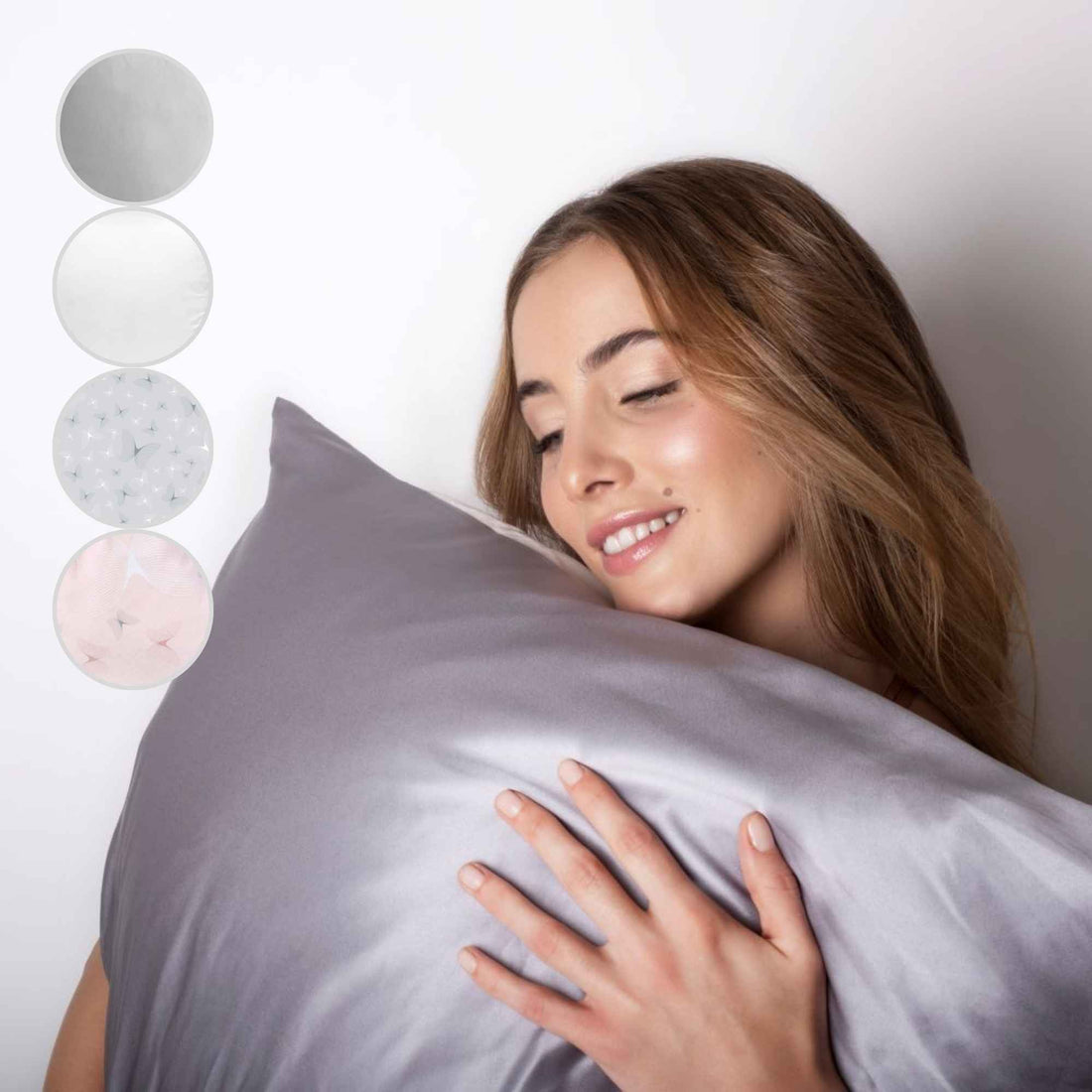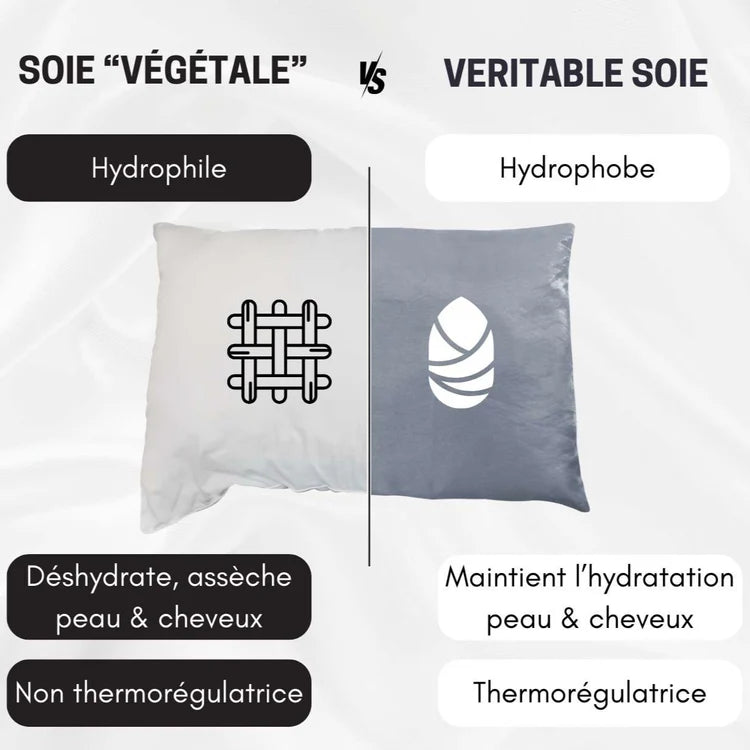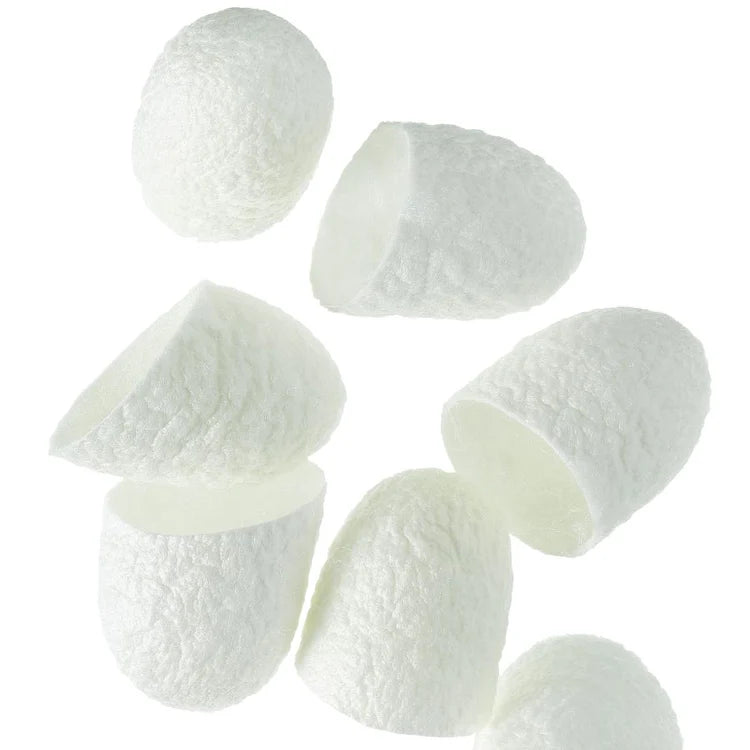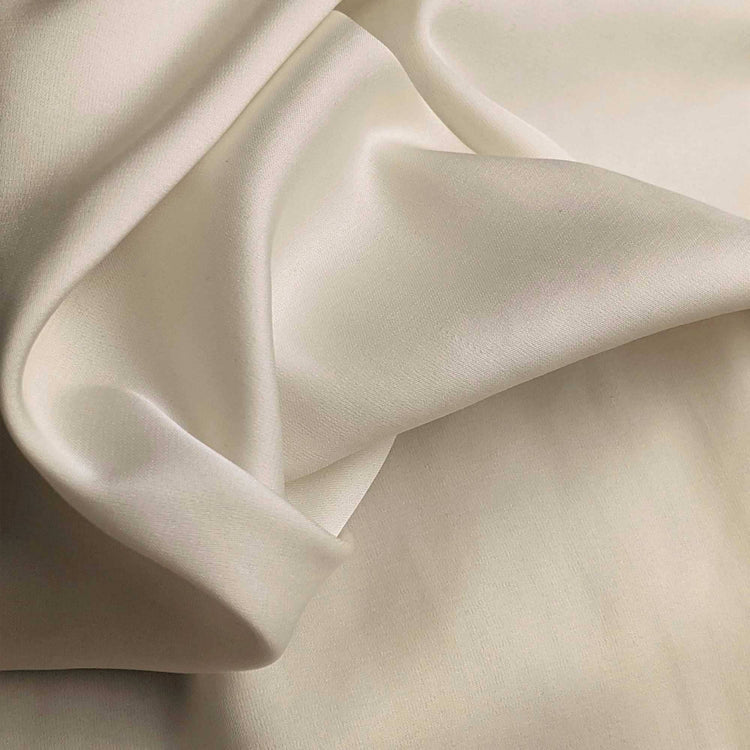In this comparison between silk and cotton, we explain the advantages and disadvantages of spending the night in contact with a silk pillowcase versus a cotton pillowcase for your skin and hair.
Advantages and disadvantages of silk pillowcases
Silk offers multiple benefits, making it a superior choice for pillowcases:
- Silk is hydrophobic: unlike cotton, silk does not absorb moisture, helping to maintain the skin's and hair’s natural hydration. Skin and hair care products applied before bedtime remain effective throughout the night.
- Silk is hypoallergenic and antibacterial: silk is naturally hypoallergenic, meaning it does not trigger allergies. It also naturally resists bacteria and dust mites, reducing the risk of skin inflammation and breakouts.
- Silk protects the skin barrier: its softness respects the skin’s barrier, smoothing the complexion and preventing sleep wrinkles. By optimizing skin hydration and supporting the skin barrier throughout the night, cellular regeneration is enhanced, slowing down skin aging.
- Silk reduces hair friction: sleeping on a silk pillowcase reduces friction, making hair easier to manage, softer in the morning, and preserving hair fiber integrity.
For the disadvantages, silk requires more delicate washing than cotton. It is recommended to choose silk of at least 18 momme density for durability and Grade A quality for optimal benefits. Also, silk is more expensive than cotton because it is much more difficult and costly to produce.
Advantages and disadvantages of cotton pillowcases
Cotton, though widely available and affordable, may negatively impact skin and hair health, leading to visible consequences on your appearance:
- Cotton is hydrophilic: it absorbs moisture naturally produced by the body, leading to dry skin and hair overnight, as it depletes them of essential hydration.
- Cotton absorbs skincare products: this reduces the effectiveness of creams and serums applied before bed, slowing their impact on skin and hair health.
- Bacteria and dust mite growth: since cotton absorbs moisture and sweat, it creates a warm, humid environment in the pillow, encouraging bacteria and dust mites to thrive, increasing inflammation and breakouts.
- Hair breakage: the drying effect of cotton weakens hair fibers, making them brittle, dry, and prone to breakage. Over time, this can affect hair length and overall health.
The main advantage of cotton is that it is a natural, plant-based material, which is affordable and easy to wash in a machine.
Why choose SILKBIOTIC silk? Made in France, proven effectiveness, certified quality...
Not all silk pillowcases are created equal, and SILKBIOTIC silk stands out for its exceptional quality. Unlike lower-grade silks produced outside Europe, SILKBIOTIC silk is made in France with OEKO-TEX and BIO (GOTS) certifications.
Our silk is Grade 6A, the highest quality available, ensuring optimal durability and effectiveness. In collaboration with CNRS Montpellier, we invest in research and development to maximize the benefits of silk for skin and hair.
By combining fibroin from SILKBIOTIC silk pillowcases with silk-based skincare and haircare treatments (biomimetic amino acids from silk proteins and the SILKBIOME complex), we recreate the protective silk cocoon, enhancing skin and hair hydration and protection overnight.
Independent laboratory tests confirm the effectiveness of our silk pillowcases. After just 14 nights, 100% of users found their skin smoother and healthier, and 96% of users reported less hair breakage.
To learn more about our products and commitments, visit "About Us" and explore our French silk universe.








